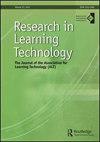利用信息和通信技术对大量学生进行评估
IF 1.2
Q2 EDUCATION & EDUCATIONAL RESEARCH
引用次数: 0
摘要
每年,世界各地都有成千上万的学生参加考试。通常,这么多的学生同时参加考试,回答几乎相同的一套问题。这种学习评估方法需要花费巨大的精力和资源来准备场地、打印考卷和组织整个过程。在类似于COVID-19大流行期间的情况下,可能会出现额外的限制和障碍。避免让所有学生在同一时间参加考试的一种方法是使用随机选题的计算机辅助评估,这样每个学生都收到一套单独的问题。本研究的目的是调查学生对使用随机项目选择的看法,以便将这种方法应用于大规模的评估。一项对1000多名被调查学生的回答的分析显示,他们中的大多数人同意或完全同意使用拟议的评估方法。与其他组的学生相比,自然科学系的学生对这种评估方法的容忍度更高。基于本研究的结果,作者得出结论,高等教育机构可以从实施上述评估方法中获益。本文章由计算机程序翻译,如有差异,请以英文原文为准。
Using information and communication technologies for the assessment of a large number of students
Many examinations with thousands of participating students are organized worldwide every year. Usually, this large number of students sit the exams simultaneously and answer almost the same set of questions. This method of learning assessment requires tremendous effort and resources to prepare the venues, print question books and organize the whole process. Additional restrictions and obstacles may appear in conditions similar to those during the COVID-19 pandemic. One way to obviate the necessity of having all the students take an exam during the same period of time is to use a computer-assisted assessment with random item selection, so that every student receives an individual set of questions. The objective of this study is to investigate students’ perceptions of using random item selection from item banks in order to apply this method in large-scale assessments. An analysis of the responses of more than 1000 surveyed students revealed that most of them agree or completely agree with using the proposed method of assessment. The students from natural science departments showed more tolerance of this method of assessment compared with students from other groups. Based on the findings of this study, the authors concluded that higher-education institutions could benefit from implementing the abovementioned assessment method.
求助全文
通过发布文献求助,成功后即可免费获取论文全文。
去求助
来源期刊

Research in Learning Technology
EDUCATION & EDUCATIONAL RESEARCH-
CiteScore
6.50
自引率
0.00%
发文量
13
审稿时长
20 weeks
 求助内容:
求助内容: 应助结果提醒方式:
应助结果提醒方式:


